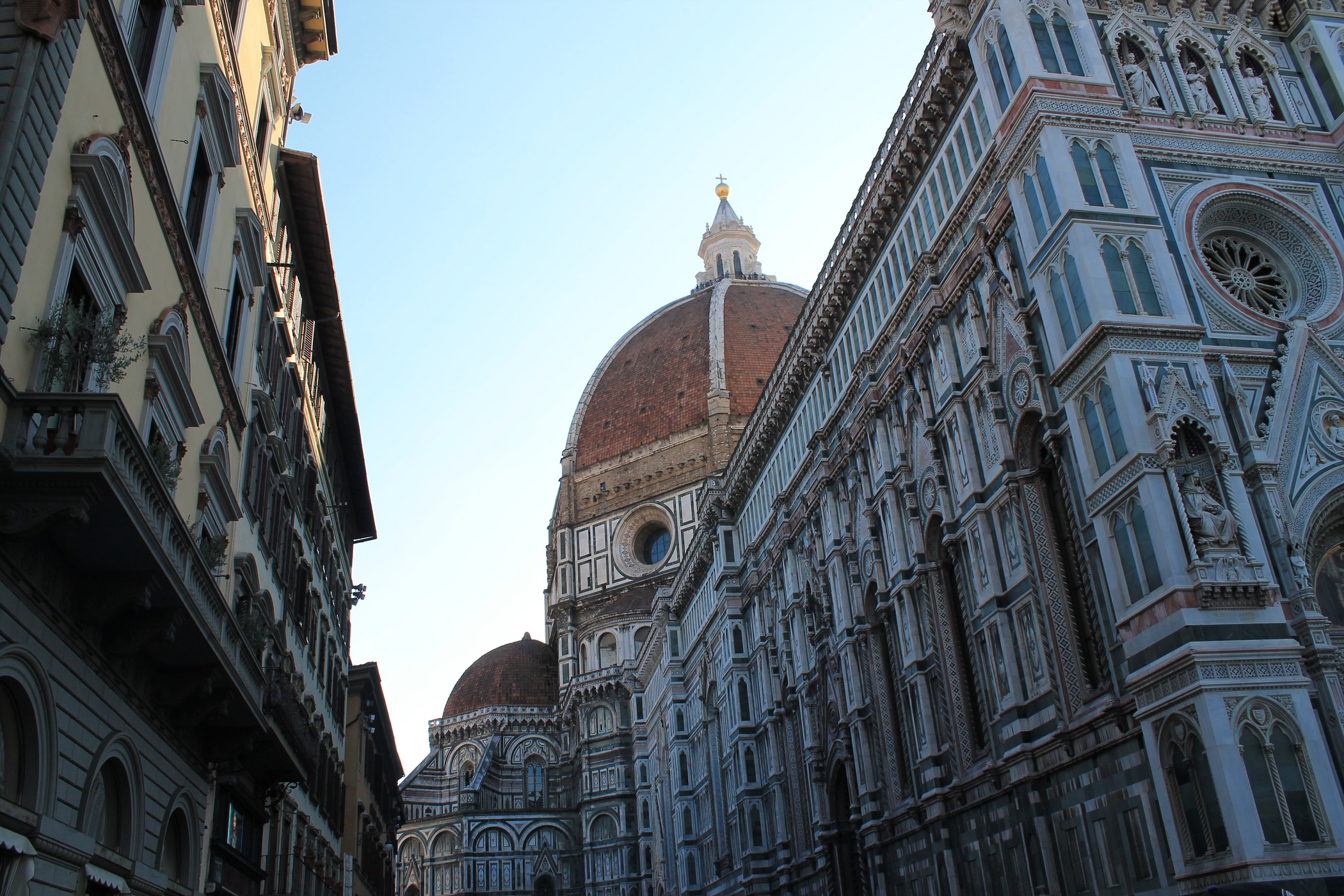

The past two weeks Miles and I have been meeting with Dr. Paul Low in W&L’s IQ center to understand the technological aspects of mapping and Virtual Reality (VR). Our meeting last week consisted primarily of our overlaying a map of the city center from the late 15th century onto a GoogleEarth map. While the cityscape has not changed terribly dramatically since the early modern period, several buildings have been demolished, new buildings and squares were constructed during the city’s cultural shift in the mid 19th century during the New Italy period of state building. The map with which were are working returns many of those buildings to their original locations, but with that return, foregoes the aerial view of the city, made possibly only by 20th century technology. That exchange of accuracy for more information has us working to balance an overlay of the early modern map on the modern birds-eye view.
While we are working on the two-dimensional aspect of the project, the three dimensional aspect of constructing each building uses that map as a foundation. In some ways, the two and three dimensional aspects of the project demand that it be thought of as two distinct projects for now (at least until we have more done on the three dimensional end of things and can completely marry the two). The mapping aspect will allow us to place pins on various items in the platform and affix information to specific sites, thereby overlaying commentary on the universe that we will be endeavoring to build.
This week we looked at various VR models, the most compelling of which (to me) was a virtual, open source museum, which featured photogrammetry-created models of Michelangelo’s David and Pietà, Botticelli’s Primavera, Leonardo da Vinci’s Mona Lisa, and many others. These images required no travel on his part, were placed in white cube gallery spaces and were curated and displayed by the creator himself. This capability got me thinking about the potential for VR in the museum world–essentially the exact opposite of this project. While we are looking to re-situate objects and images, the ability to transport objects into vacuums of space as a way to study them could prove equally useful, especially in the field of art history when it comes to curation and the like.